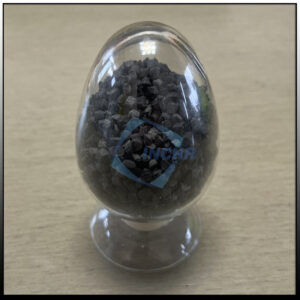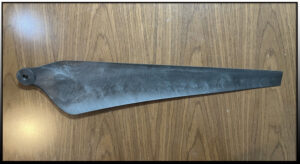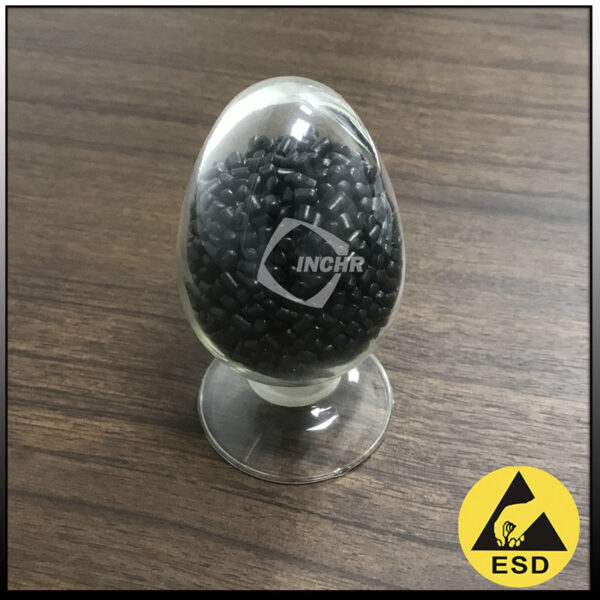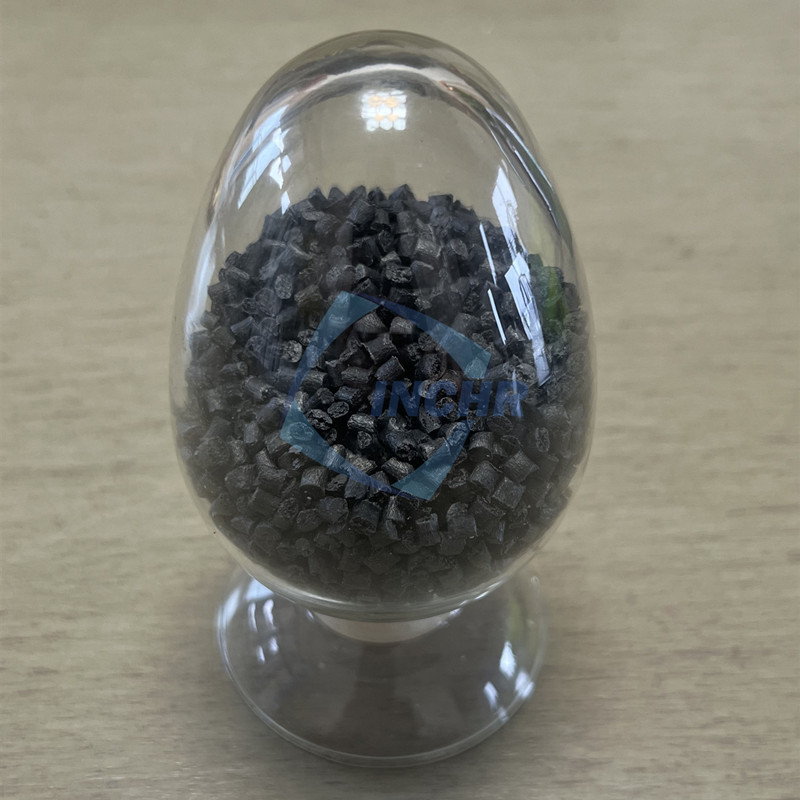Carbon fiber is a high-strength, high-modulus fiber with a carbon content of more than 90%, which is mainly composed of carbon elements. Most carbon fiber reinforced compounds use short carbon fibers. Short carbon fibers refer to carbon fibers with a shorter length, generally ranging from a few millimeters to tens of millimeters. Compared with long carbon fibers, short carbon fibers have better dispersibility and can be more evenly dispersed in the matrix when mixed with matrix materials (such as resins, plastics, etc.). It can be used to enhance the performance of various materials, improve strength, hardness, wear resistance, conductivity, and many other properties, and is widely used in many fields such as automobiles, aerospace, electronics, and sporting goods.

The main reasons for choosing carbon fiber as the conductive filler for conductive nylon compounds are as follows:
Excellent conductive properties
Carbon fiber itself has a certain conductivity. Adding it to nylon can make the originally insulating nylon material have good conductive properties, which can meet the application scenarios that require the conductive properties of the material, such as the housing of electronic equipment, static elimination devices, etc. The conductive properties of conductive nylon compounds are relatively stable, unlike some other conductive fillers that may cause fluctuations in conductive properties due to changes in environmental factors (such as temperature and humidity). Therefore, carbon fiber reinforced conductive nylon can maintain relatively stable conductive properties under different use environments.
Good shielding properties
Carbon fiber has high conductivity. When electromagnetic waves act on carbon fiber conductive nylon, carbon fiber can cause electromagnetic waves to generate induced currents inside the material, converting the energy of electromagnetic waves into heat energy and dissipating it. At the same time, part of the electromagnetic waves will be reflected back by the surface of the material, thereby greatly reducing the amount of electromagnetic waves penetrating the material. This absorption and reflection of electromagnetic waves make it have a good shielding effect on electromagnetic waves in the high-frequency range, which can effectively block the electromagnetic wave radiation generated by electronic devices such as mobile phones, computers, and microwave ovens, protecting human health and the normal operation of electronic equipment. Carbon fiber conductive nylon can maintain stable shielding effectiveness in a wide frequency range and can have a good shielding effect for both low-frequency electromagnetic signals and high-frequency microwave signals. This enables it to perform reliable shielding performance in electromagnetic environments of different frequencies and is suitable for various complex electromagnetic environments, such as communication base stations, radar stations, and other places.
Enhanced mechanical properties
Carbon fiber is a high-strength material, and its strength is much higher than that of ordinary fiber materials. After being added to nylon, it can significantly improve the mechanical properties of nylon such as tensile strength, bending strength, and impact strength, so that conductive nylon materials can be used in occasions with high strength requirements, such as automotive parts, mechanical structural parts, sports equipment, etc. Carbon fiber has high rigidity, which can increase the rigidity of nylon, making it less likely to deform when subjected to force and maintaining good dimensional stability. This is very important for the manufacture of some parts with high dimensional accuracy requirements. The addition of carbon fiber can also improve the wear resistance of nylon, reduce the wear rate of the material, and extend the service life of the material. In some environments that require frequent friction or wear, such as gears, bearings, and other parts, the use of carbon fiber reinforced conductive nylon can improve the reliability and durability of the parts.

Lighten the overall weight
The density of carbon fiber is much smaller than that of metal materials. Using it to reinforce nylon can reduce the overall density of the material. In some fields with strict weight restrictions, such as aerospace, automobiles, etc., the use of conductive nylon can achieve lightweight parts, reduce energy consumption, and improve the performance and efficiency of equipment.
Other performance advantages
Both carbon fiber and nylon have certain corrosion resistance. The combined carbon fiber conductive nylon has good resistance to chemical substances such as acids, alkalis, and salts, and can be used in harsh chemical environments. Carbon fiber has high-temperature resistance, which can improve the high-temperature resistance of nylon to a certain extent, so that the conductive nylon material can still maintain good performance stability in high-temperature environments, and is suitable for applications under some high-temperature working conditions.


